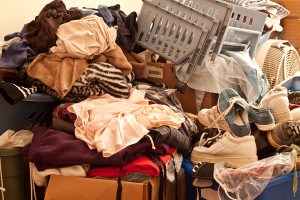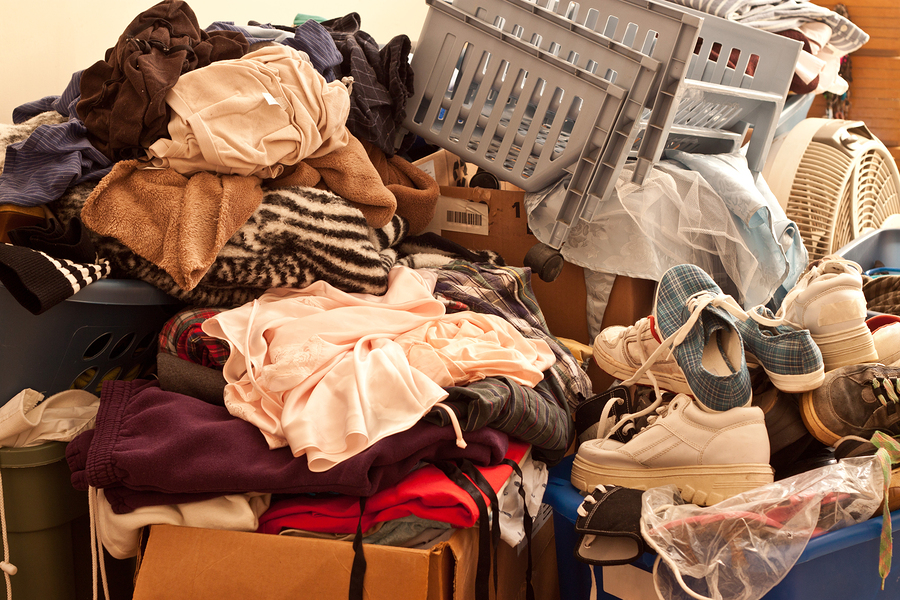According to a fact sheet produced by the International OCD Foundation, 42 percent of hoarder homes had blocked access to a sink, 45 percent had blocked access to a refrigerator and 10 percent blocked access to a toilet. In Massachusetts alone, 38 percent of hoarding cases were deemed “filthy environments.”
Matt Paxton, host of the TV show “Hoarders” and the author of “The Secret Lives of Hoarders,” said that while hoarding awareness is on the rise, hoarding is not.
 “It’s just that people are so much more aware of it now. When I started cleaning, it was around 3 million hoarders a year in America, and right now we’re between 10 and 14 million hoarders a year. We’re just a lot more aware of it,” Paxton, who is also the spokesperson for ServiceMaster Restore, said.
“It’s just that people are so much more aware of it now. When I started cleaning, it was around 3 million hoarders a year in America, and right now we’re between 10 and 14 million hoarders a year. We’re just a lot more aware of it,” Paxton, who is also the spokesperson for ServiceMaster Restore, said.
The items hoarded vary.
“It varies from person to person. It can go everywhere from cats all the way to, I’ve had a lady that had a couple hundred thousand Beanie Babies. You’ll see the most common trait is that most hoarders are not hoarding for themselves. They’re actually hoarding items for other people. Hoarders are actually very caring and thoughtful people. It’s rarely items for themselves,” said the TV personality.
While hoarders tend to hoard for others,hoarding can be dangerous.
“Well, it’s dangerous for two reasons ‑‑ physical and mental. Physically, obviously, a house can be destroyed. We’ve seen entire houses fall down because of the weight and the structure issues of all the stuff in the home. Mentally is where it really is an issue. It’s such a silent disease. People naturally, that are hoarding, they cut off their family, they don’t want to be around their family, and they get away from their friends, and they lose their jobs,” he said.
Paxton shared a few of the more memorable hoarding cases he’s seen.
“I had 350 cats come out of a lady’s house earlier this year. I’ve seen entire houses fall. We actually were in a house one time where an earthquake hit, and we were moving about 10,000 pounds of adult diapers,” Paxton said.
Besides the physical and mental danger of hoarding to the homeowners themselves, there’s also a danger to those that have to clean up after a hoarder.
“For us cleaning, there’s a lot of safety issues. The biggest issue we’re seeing now is a lot of first responders can no longer go in the homes to help people. Say a hoarder has a heart attack or the house catches on fire. The first responders are no longer able to go in the home because it’s too dangerous for them to protect the hoarder,” he said.
Health issues can affect those that enter a hoarder’s home.
“Air quality is a huge concern for anyone. If you’re just a family member coming to talk to a hoarder, you really need to make sure you have a mask on. If you’re a worker, like myself or someone from my team on ServiceMaster, we’ve got to be fully, fully covered ‑‑ I mean, actually no skin. You should be covered. You have to be so safe, and watch specifically the air quality in the room, because there’s often other things associated ‑‑ mold, mildew, lots of airborne pathogens that people don’t think about that are in the house, but they really are,” the hoarding expert said.
Tom Coba, president of ServiceMaster, spoke about the company’s specialized division on hoarding and estate cleaning services.
He explained there is a need for specialization to handle jobs involving hoarding.
“Matt has about seven years of experience in going on‑site, and visiting with the customer or potential customer, understanding what the conditions are, understanding how much work is there, understanding who’s going to be involved, in terms of family members or friends, relatives, whatever that might be. So really appealing to almost the psychological side of it, understanding all of that, in addition to the actual cleanup work,” Coba said.
Coba said that Paxton helps train franchisees to better understand the conditions in advance of the physical cleanup work.
“We are somewhat used to that already, in some of the work we do on the disaster‑recovery situations. We’re often going into places, both residential and commercial, that may not be healthy,” said Coba. “It’s not unusual to have to have certain uniforms or coverage protection, as well as surgical masks.”
The ServiceMaster president said that the company now understands the importance of the psychological side of hoarding.
“As it relates to hoarding, I think we’ve done cleanup with some of our franchisees, but without the expertise and training that Matt provides,” Coba said. “Having spent time with Matt and reading his book and watching his show, really come to have a much greater appreciation for the psychological side of this, in dealing with the hoarder or their family or friends, and what’s involved there.”
Paxton’s crew is educating each individual ServiceMaster franchise. In addition, his team plans to reach out on a local level.
“We’re talking to therapists. We’re talking to professional organizers. We’re talking to senior move managers. We’re talking to estate lawyers. There’s probably 50 people in every market that a family member of a hoarder going to reach out to,” Paxton said. “We’re building that network from within locally at each group, because you really can’t just put one ad out and expect hoarders are going to look. We really have to take our time, and strategically build that network, and let them know that we’re here to help them now or 10 years from now, when they need us,” said Paxton.
Though hoarding may stem from a deeper issue, it’s rare for a hoarder to seek out help on their own.
“Rarely does a hoarder reach out and say, ‘I need help,’” said Paxton.
Evaluating damage in a hoarder’s home can be difficult.
“In terms of assessing what’s visible, and sometimes what’s not visible, and the amount of material that needs to be removed from the premise. Some of it may be more personal. Some of it may truly be trash or go to trash,” Coba said. “Beyond that, it’s often difficult to see what the flooring might look like, or the walls might look like behind the piles. Whether there’s been damage over the years or not, has mold set in, or has the wood eroded underneath. That’s the part where it’s often difficult.”
The company intends toadvertise to get the word out, not only to adjusters but to others, that the service is available.
“We’ve actually signed on Matt, as a spokesperson for our brand, for the balance of 2013 through 2014. In ’14, our hope and goal is to get some additional media exposure, with Matt as a spokesperson, as well as our brand, individually. We can do both. We certainly recognize Matt’s presence already, with the TV show “Hoarders.” That he’s already a familiar face and voice. That’s meaningful for us,” Coba explained.
“Beyond the media presence, Matt will make appearances at trade shows and other events. That’s all part of communicating, not only that this is out there, but also, there’s a way to help solve it,” said Coba. “Part of our portfolio of brands does get involved in restoring people’s lives. We do that through the disaster restoration. In this case.., we’re taking it to another place where we can help restore lives.”
Was this article valuable?
Here are more articles you may enjoy.


 GSK Zantac Appeal Gets Tough Questions From Some US Judges
GSK Zantac Appeal Gets Tough Questions From Some US Judges  As Trump Considers Auto Tariffs Pause, Parts Exemptions Could Be Key for US Industry
As Trump Considers Auto Tariffs Pause, Parts Exemptions Could Be Key for US Industry  Group Sues California Department of Insurance Over FAIR Plan Surcharges
Group Sues California Department of Insurance Over FAIR Plan Surcharges  US Regulator Takes Initial Steps to Boost Self-Driving Cars
US Regulator Takes Initial Steps to Boost Self-Driving Cars 